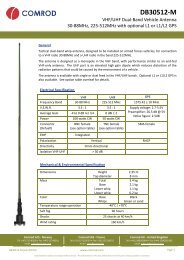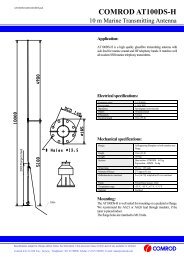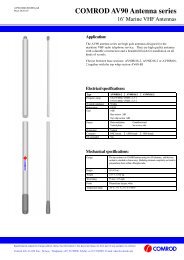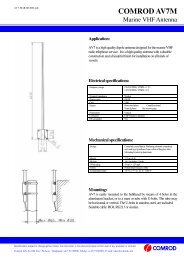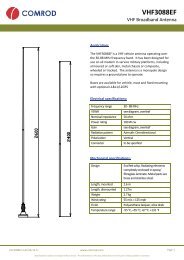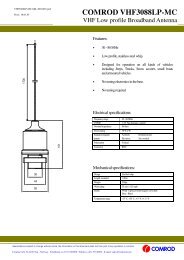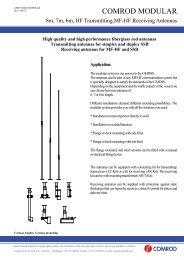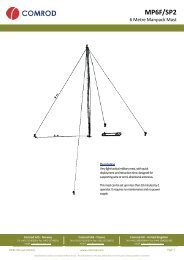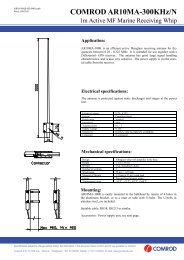Annual report 2012 - Comrod
Annual report 2012 - Comrod
Annual report 2012 - Comrod
Create successful ePaper yourself
Turn your PDF publications into a flip-book with our unique Google optimized e-Paper software.
<strong>Annual</strong> <strong>report</strong> <strong>2012</strong> 24/92Strategies and values | Group | Parent company | Corporate governance | Contact<strong>Annual</strong> <strong>report</strong> Financial statement Notescan be reliably estimated. Evidence of impairmentmay include indications that the debtors or agroup of debtors is experiencing significantfinancial difficulty, default or delinquency ininterest or principal payments, the probabilitythat they will enter bankruptcy or other financialreorganisation and where observable dataindicate that there is a measurable decrease in theestimated future cash flows, such as changes inarrears or economic conditions that correlate withdefaults.If there is objective evidence that an impairmentloss has been incurred, the amount of the lossis measured as the difference between theasset’s carrying amount and the present valueof estimated future cash flows (excluding futureexpected credit losses that have not yet beenincurred). The carrying amount of the assetis reduced through the use of an allowanceaccount and the amount of the loss is recognisedin the income statement. Loans together withthe associated allowance are written off whenthere is no realistic prospect of future recoveryand all collateral has been realised or has beentransferred to the Group. If, in a subsequentyear, the amount of the estimated impairmentloss increases or decreases because of an eventoccurring after the impairment was recognised,the previously recognised impairment loss isincreased or reduced by adjusting the allowanceaccount. If a future write-off is later recovered, therecovery is recognised in the income statement.Derecognition of financial instrumentsFinancial assetsA financial asset (or, where applicable a partof a financial asset or part of a group of similarfinancial assets) is derecognised when:• the rights to receive cash flows from the assethave expired; or• the Group has transferred its rights to receivecash flows from the asset or has assumed anobligation to pay the received cash flows in fullwithout material delay to a third party under a‘pass-through’ arrangement; and either (a) theGroup has transferred substantially all the risksand rewards of the asset, or (b) the Group hasneither transferred nor retained substantiallyall the risks and rewards of the asset, but hastransferred control of the asset.When the Group has transferred its rights toreceive cash flows from an asset or has enteredinto a pass-through arrangement, it evaluatesif and to what extent it has retained the risksand rewards of ownership. When it has neithertransferred nor retained substantially all of therisks and rewards of the assets, nor transferredcontrol of the asset, the asset is recognized to theextent of the Group`s continuing involvement inthe assets. In that case, the Group also recognizesand associated liability. The transferred assets andthe associated liability are measured on a basisthat reflects the rights and obligations that theGroup has retained.Continuing involvement that takes the form of aguarantee over the transferred asset, is measuredat the lower of the original carrying amount of theasset and the maximum amount of considerationthat the Group could be required to repay.When continuing involvement takes the formof a written and/or purchased option (includinga cash settled option or similar provision) onthe transferred asset, the extent of the Group›s24



